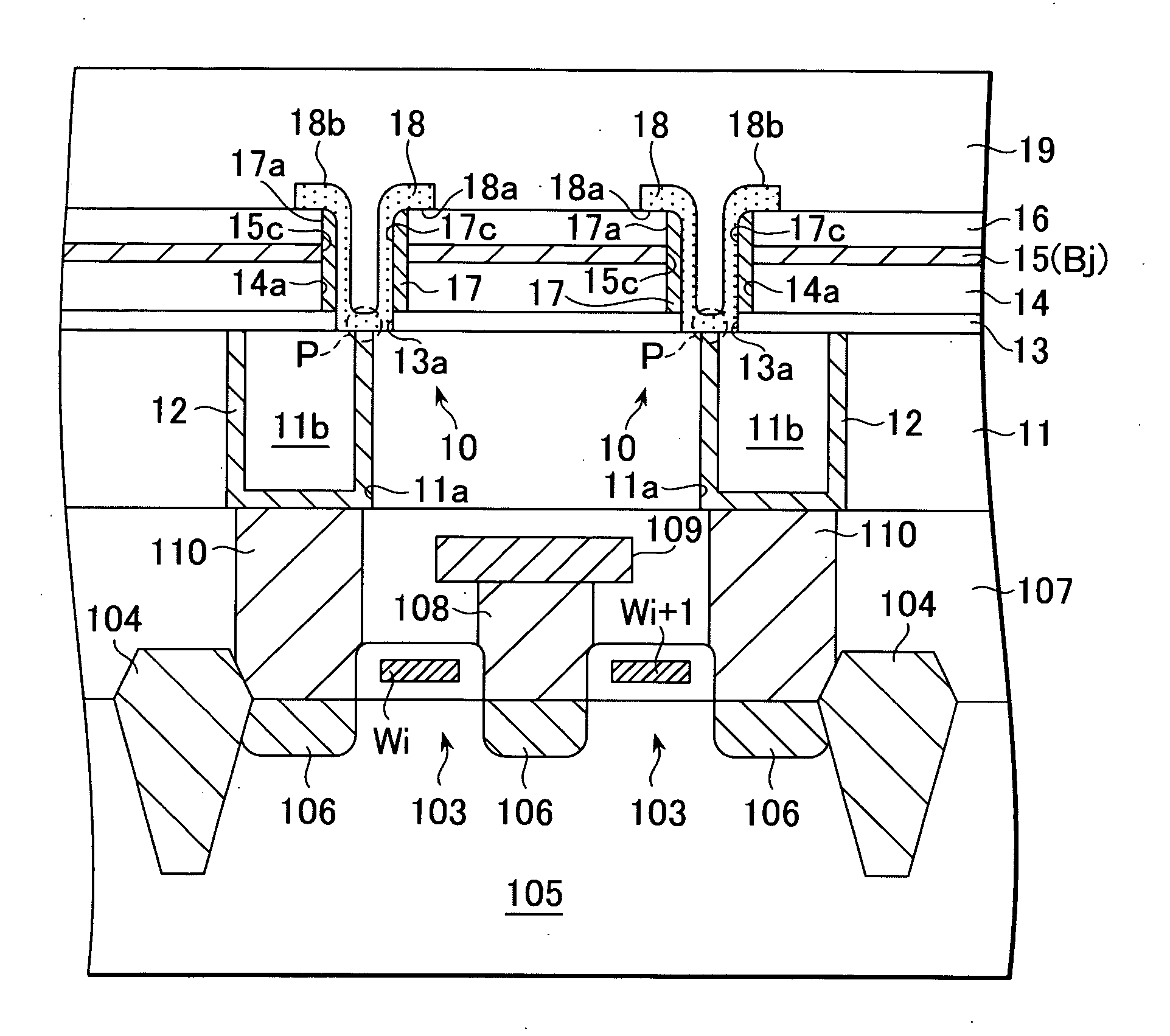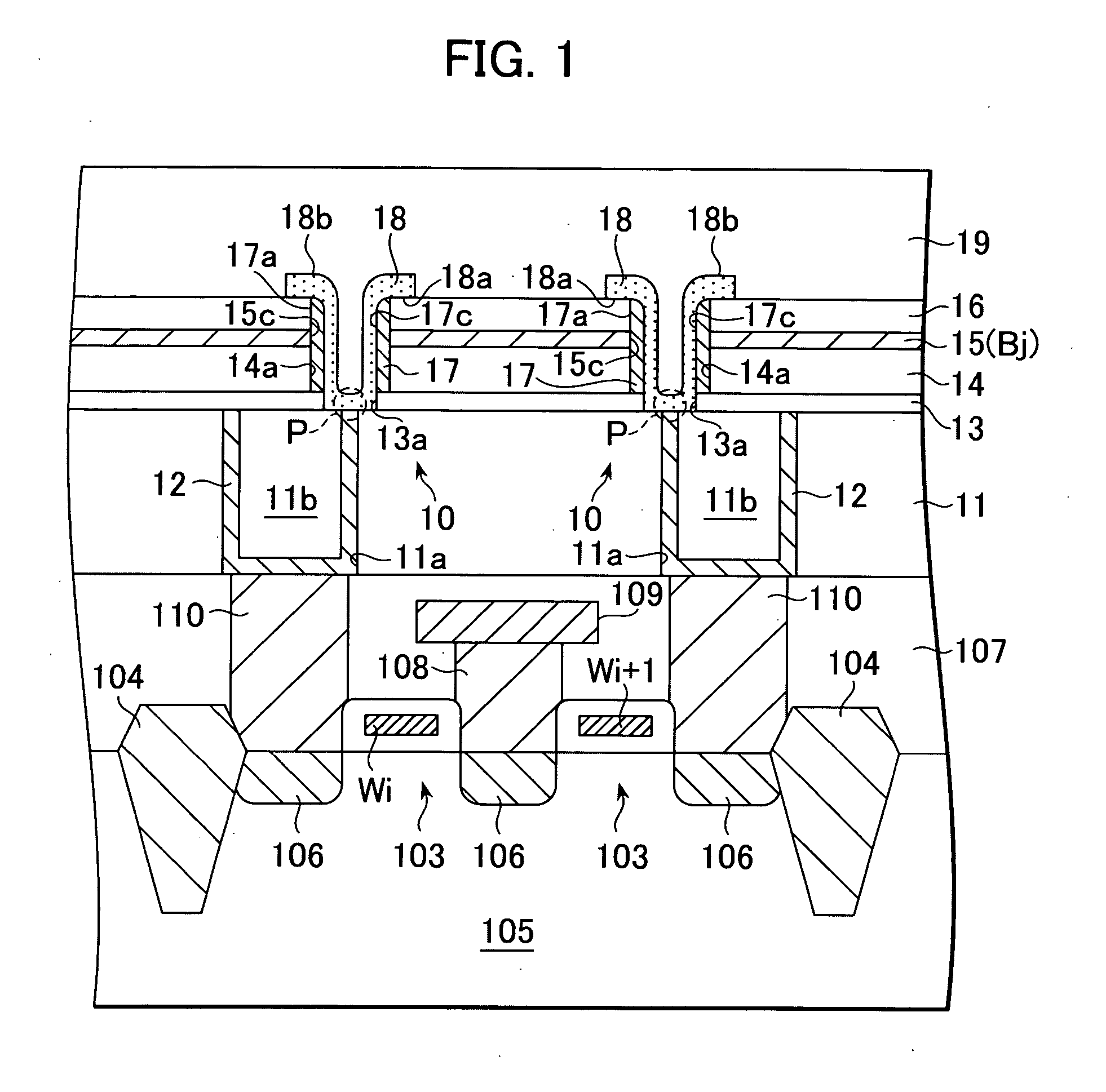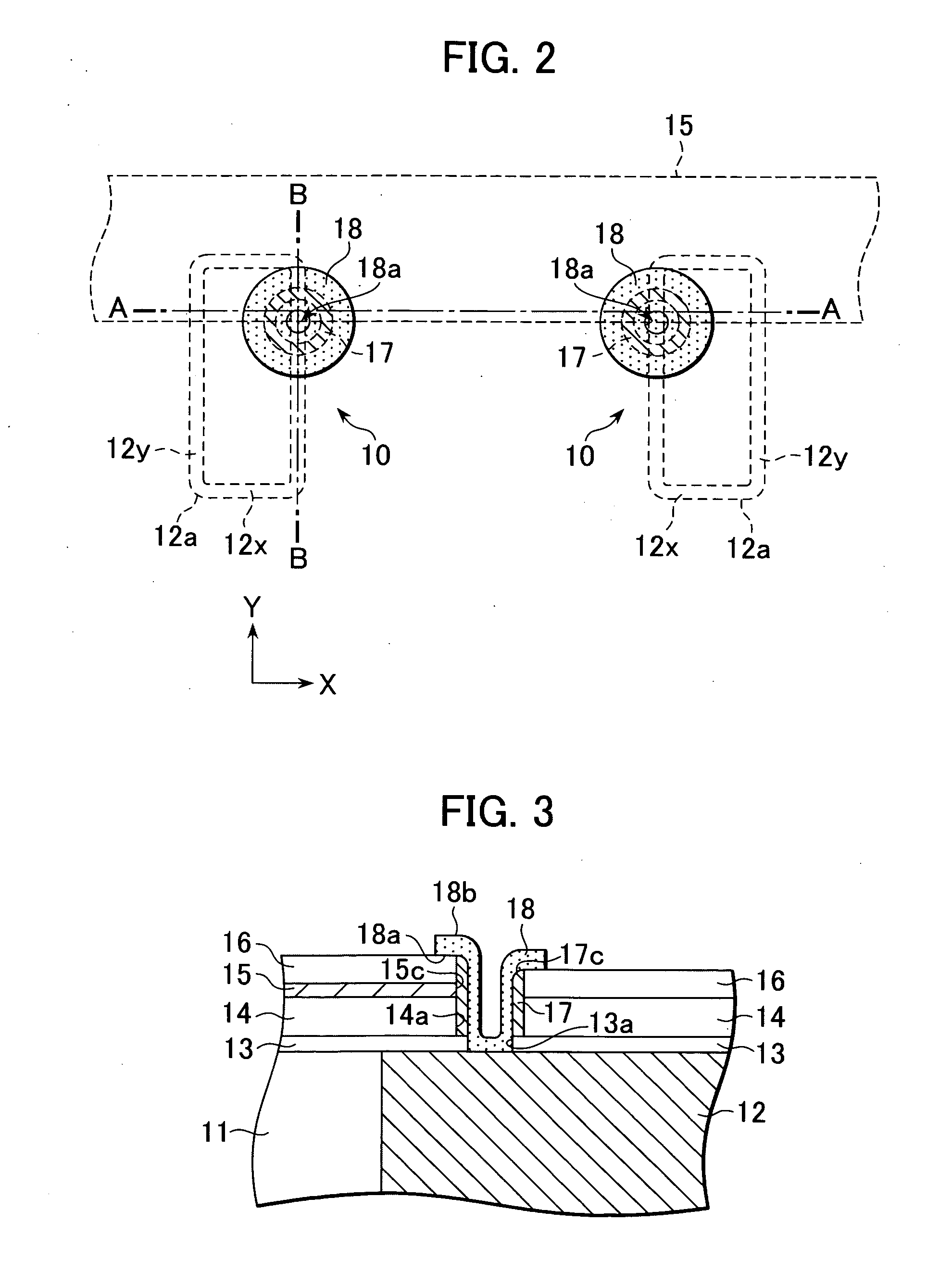Electrically rewritable non-volatile memory element and method of manufacturing the same
a non-volatile memory element, electric rewritable technology, applied in the direction of digital storage, instruments, electrical equipment, etc., can solve the problems of reducing the electrical power consumption of the device, dram is volatile memory that loses stored data, and the limit of the device electrical power consumption can be reduced, so as to improve the heating efficiency and reduce the write current. , the effect of high heating efficiency
- Summary
- Abstract
- Description
- Claims
- Application Information
AI Technical Summary
Benefits of technology
Problems solved by technology
Method used
Image
Examples
first embodiment
[0062]FIG. 1 is a cross-sectional view of the structure of a memory cell using the non-volatile memory element 10 according to the present invention. FIG. 2 is a plan view of the memory element 10. A cross-sectional view along the line A-A shown in FIG. 2 is shown in FIG. 1. FIG. 3 is a cross-sectional view along the line B-B shown in FIG. 2.
[0063] With reference to FIG. 1, the non-volatile memory element 10 according to this embodiment of the present invention includes an interlayer insulation layer 11, a bottom electrode 12 buried in the interlayer insulation layer 11, a first etching stopper 13, interlayer insulation layer 14, bit line 15 and second etching stopper 16 formed in that order on the bottom electrode 12, a top electrode 17 provided on the inside wall of a through-hole 14a, and a recording layer 18 in contact with the bottom electrode 12 and the top electrode 17.
[0064] A material such as silicon oxide or silicon nitride can be used for the interlayer insulation layers...
second embodiment
[0112] A non-volatile memory element 20 according to the present invention will now be described.
[0113]FIG. 15 is a cross-sectional view of the structure of a memory cell using the non-volatile memory element 20 of this embodiment.
[0114] As shown in FIG. 15, the memory element 20 of this embodiment differs from the memory element 10 of the first embodiment shown in FIG. 1 in that it has no second etching stopper 16, the bit line 15 is provided over the through-hole 14a, and the through-hole 14a is filled with. insulation material 21. Other parts are the same as those of the memory element 10 and are denoted using the same symbols, so further explanation thereof is omitted.
[0115] Since in this embodiment the bit line 15 is provided over the through-hole 14a, the bit line 15 and top electrode 17 are connected vertically. Between the bit line 15 and the recording layer 18 is the insulation material 21 that fills the through-hole 14a, so there is no direct contact between the bit line...
PUM
 Login to View More
Login to View More Abstract
Description
Claims
Application Information
 Login to View More
Login to View More - R&D
- Intellectual Property
- Life Sciences
- Materials
- Tech Scout
- Unparalleled Data Quality
- Higher Quality Content
- 60% Fewer Hallucinations
Browse by: Latest US Patents, China's latest patents, Technical Efficacy Thesaurus, Application Domain, Technology Topic, Popular Technical Reports.
© 2025 PatSnap. All rights reserved.Legal|Privacy policy|Modern Slavery Act Transparency Statement|Sitemap|About US| Contact US: help@patsnap.com



